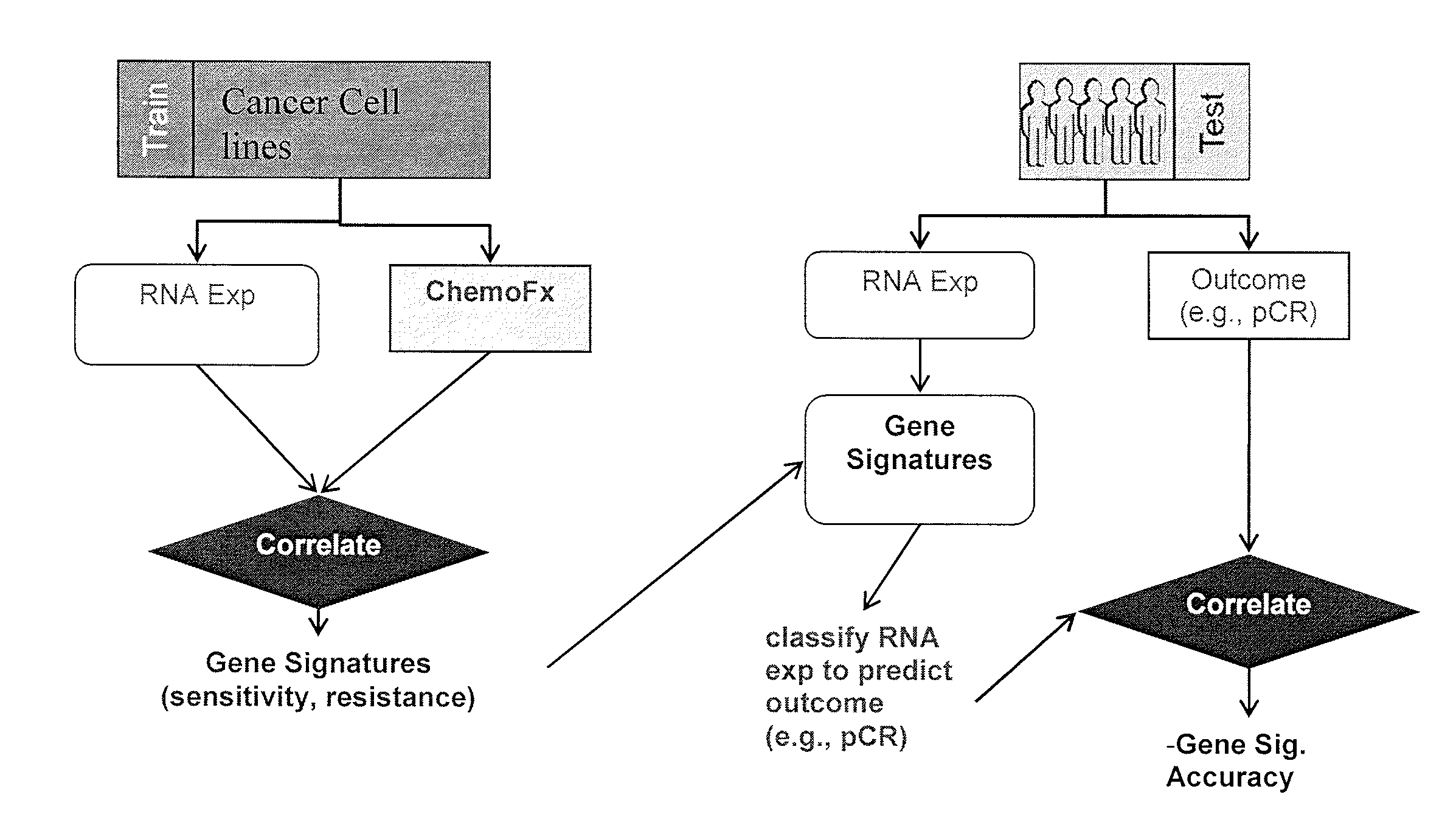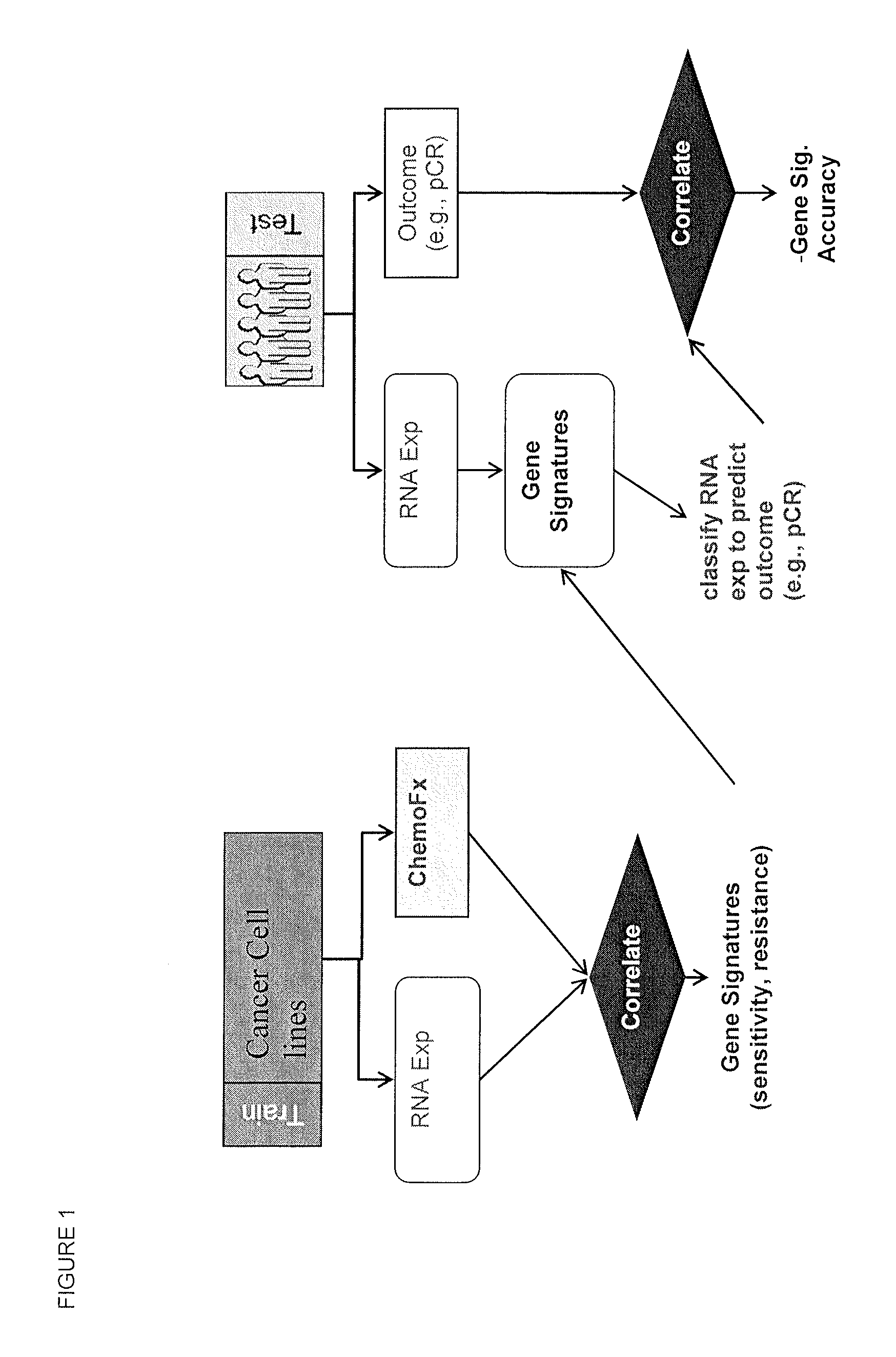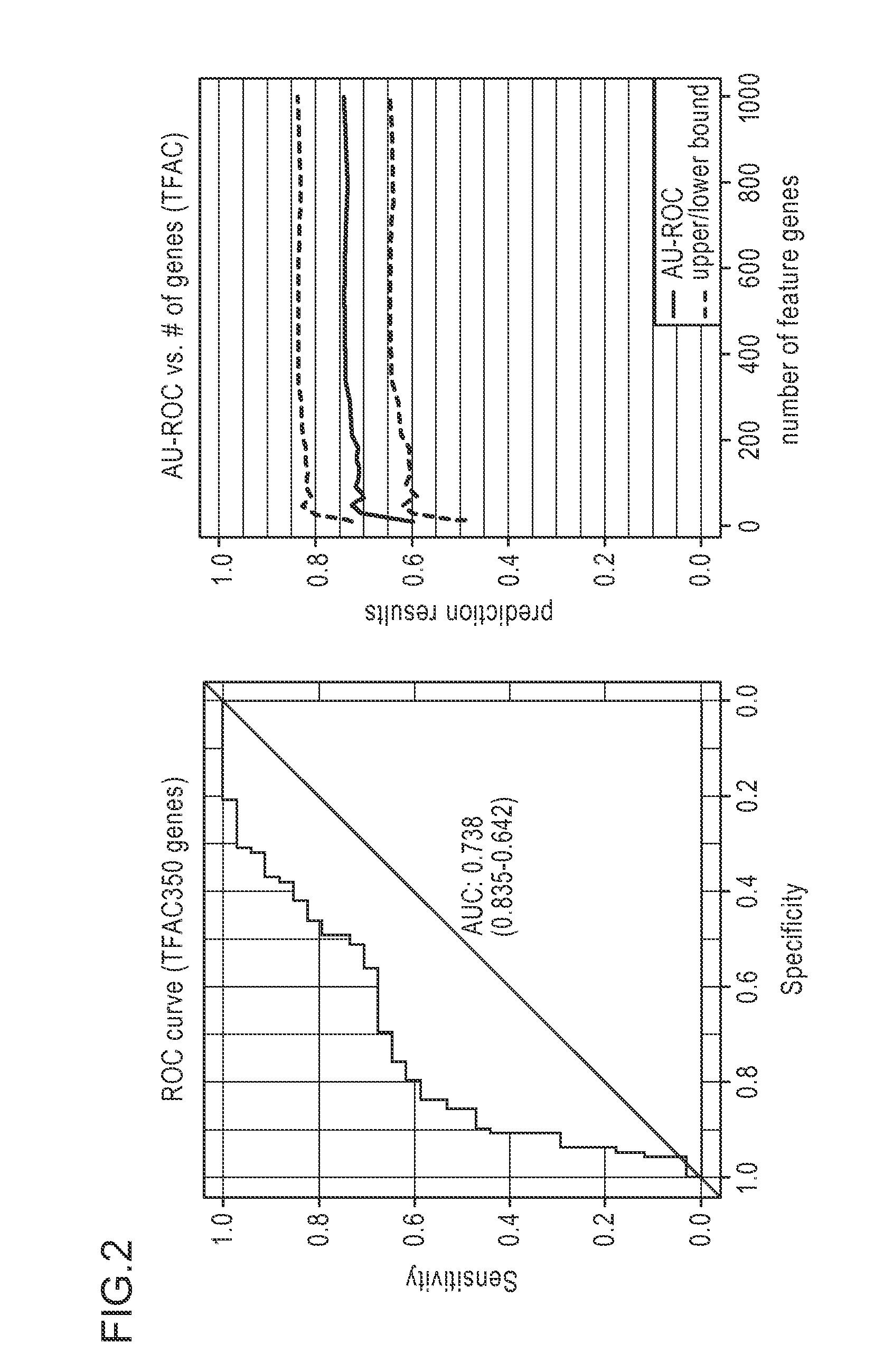Methods and systems for evaluating the sensitivity or resistance of tumor specimens to chemotherapeutic agents
a tumor specimen and sensitivity technology, applied in the field of molecular diagnostics, can solve the problems of increased health care costs, death, and inability to achieve optimal chemotherapy, and achieve complete and/or accurate prognosis and/or predictive effect, reducing the length of time and quantity of patient samples
- Summary
- Abstract
- Description
- Claims
- Application Information
AI Technical Summary
Benefits of technology
Problems solved by technology
Method used
Image
Examples
example 1
Identifying and Validation Gene Expression Signatures
[0120]Cancer cell lines (breast cancer) from a Berkeley Labs collection (Hoeflich et al: In vivo Antitumor Activity of MEK and Phosphatidylinositol 3-Kinase Inhibitors in Basal-Like Breast Cancer Models. Clinical Cancer Research 2009, 15(14):4649-4664.) were tested for their sensitivity in vitro to the combinations TFAC, EC, FEC, AC, ACT, TFEC, and DX. TFAC is the combination of paclitaxel, fluorouracil, doxorubicin and cyclophosphamide. EC is the combination of epirubicin and cyclophosphamide. FEC is the combination of fluorouracil, epirubicin and cyclophosphamide. AC is the combination of doxorubicin and cyclophosphamide. ACT is the combination of doxorubicin, cyclophosphamide and docetaxel. TFEC is the combination of paclitaxel, fluorouracil, epirubicin and cyclophosphamide. DX is the combination of docetaxel and fluorouracil. In vitro chemosensitivity was determined using the ChemoFx™ assay (Precision Therapeutics, Inc., Pitts...
example 2
Identification and Validation of TFEC MultiGene Predictor (MGP)
[0135]42 breast cancer cell lines were tested for their responses to the combination of docetaxel (T), fluorouracil (F), epirubicin (E) and cyclophosphamide (C) in vitro, and their gene expression profiles were used to derive a predictor for sensitivity to TFEC. This MGP was applied to predict the patient chemotherapy responses in US Oncology Study 02-103 clinical trial. The prediction procedure was performed blindly without knowledge of patient clinical outcomes and the prediction results were evaluated independently.
Methods
Patients and Samples
[0136]US Oncology 02-103 was a phase II clinical trial on women with stage II / III breast cancer. A majority of patients whose tumors were HER2-negative received 4 cycles of FEC followed by 4 cycles of TX, whereas most patients whose tumors were HER2-positive received trastuzumab (H) in addition to FEC / TX. HER2 status was assessed by IHC or FISH. IHC ≧3+ was considered positive and...
example 3
Identification and Validation of AC and ACT MultiGene Predictor (MGP)
Methods
Development of the Genomic Predictors
[0158]Forty-two breast cancer cell lines were treated with the combination of doxorubicin (A) and an active metabolite of cyclophosphamide (C) or the combination of A, C, and docetaxel (T) as already described. In vitro chemoresponse was measured as described herein. Briefly, cell growth inhibition was evaluated at 10 concentrations of combination AC or ACT and a dose-response curve was established. The area under the curve (AUC) was calculated to quantify the sensitivity of each cell line to the treatment; a lower AUC score indicates greater sensitivity. Gene expression profile data for these 42 cell lines were downloaded from the Gene Expression Omnibus database (GSE12777). The MGP for AC (MGP-AC) and the MGP for ACT (MGP-ACT) were separately developed using supervised principal components regressions. By this method, a lower MGP score corresponds to a greater sensitivi...
PUM
| Property | Measurement | Unit |
|---|---|---|
| drug-resistance | aaaaa | aaaaa |
| size | aaaaa | aaaaa |
| resistance | aaaaa | aaaaa |
Abstract
Description
Claims
Application Information
 Login to View More
Login to View More - R&D
- Intellectual Property
- Life Sciences
- Materials
- Tech Scout
- Unparalleled Data Quality
- Higher Quality Content
- 60% Fewer Hallucinations
Browse by: Latest US Patents, China's latest patents, Technical Efficacy Thesaurus, Application Domain, Technology Topic, Popular Technical Reports.
© 2025 PatSnap. All rights reserved.Legal|Privacy policy|Modern Slavery Act Transparency Statement|Sitemap|About US| Contact US: help@patsnap.com



